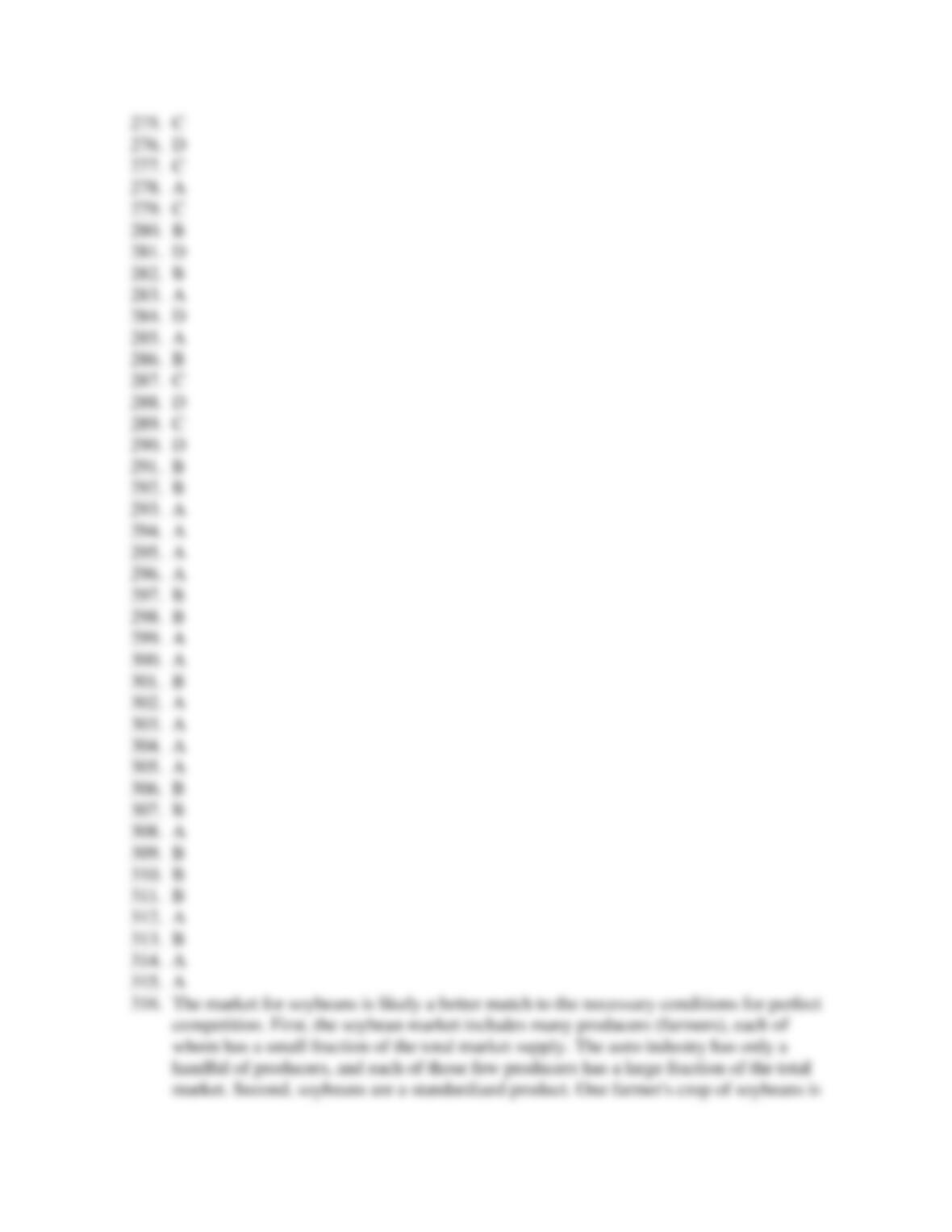If the long-run market supply curve for a perfectly competitive market is horizontal,
then this industry exhibits _____ costs.
In a perfectly competitive market, tastes and preferences lead to an increase in the
demand for the good. Holding everything else constant, this will lead to an increase in
price that will result in _____, which will _____, which will _____.
positive economic profits; attract new firms; reduce the price
economic losses; attract new firms; reduce the price
positive economic profits; lead some firms to leave the industry; further increase
the price
economic losses; lead some firms to leave the industry; further increase the price
A perfectly competitive industry with constant costs initially operates in long-run
equilibrium. When demand increases:
in the short run, prices and profits will be higher, but in the long run, price will fall
back to its original level and firms will again earn zero economic profit.
in the long run and the short run, prices and profits will be higher than before the
demand increase.
in the short run, prices and profits will fall, but in the long run, price will rise back
to its initial level, as will profits.
in the long run and the short run, prices and profits will be lower than before the
demand increase.
A perfectly competitive industry with constant costs initially operates in long-run
equilibrium. When demand increases, in the long run and the short run:
positive economic profits will result for all firms.
higher prices will result.
negative economic profits will result for some firms.
In the long run, all of the firms in a perfectly competitive industry will:
produce at an output level at which average total cost equals marginal cost.
earn an economic profit greater than zero.
exit the industry if price is greater than average total cost.
produce an output level at which price is greater than average total cost.



















